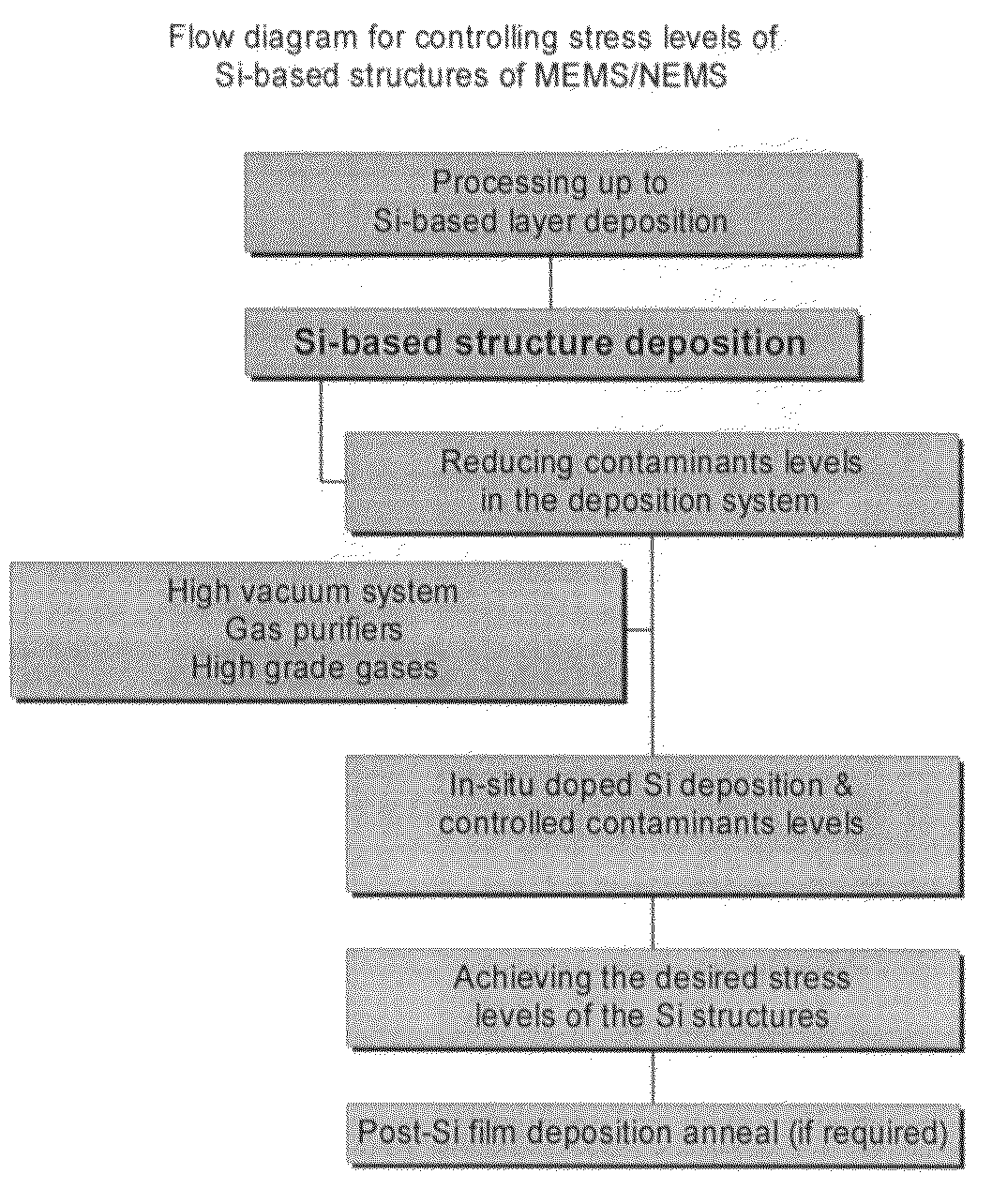Method of controlling film stress in MEMS devices
a technology of micro-electromechanical systems and film stress, which is applied in the direction of micro-structural devices, micro-gyroscopes, micro-actuators, etc., can solve the problems of affecting the interaction of the manufacturing process and the manufacturing of micro-electromechanical systems such as micro-gyroscopes, which integrate very sensitive moving mechanical parts
- Summary
- Abstract
- Description
- Claims
- Application Information
AI Technical Summary
Benefits of technology
Problems solved by technology
Method used
Image
Examples
Embodiment Construction
[0078]In order to assist the reader in understanding the invention, a detailed discussion of the underlying materials science will be undertaken.
Impact of a Si Film Anneal on Film Properties
[0079]The impact of an anneal performed at 1100° C. on the film resistivity, mechanical stress and stress gradient properties can be analyzed by capping the deposited Si film with an oxide layer in order to prevent the loss of dopants. In addition, this allows one to have a “barrier” therefore preventing the contamination of the Si-based film by the annealing ambient. In that case, the Si film deposited is an in-situ doped amorphous Si film. The dopant used is phosphorus while nitrogen is used as the carrier gas for phosphine unless specified otherwise. Film resistivity
[0080]The resistivity results achieved for various film thickness before and after annealing the Si layer are shown in FIG. 7. This figure demonstrates that the annealing step significantly lowers the film resistivity. Prior to ann...
PUM
| Property | Measurement | Unit |
|---|---|---|
| temperature | aaaaa | aaaaa |
| partial pressure | aaaaa | aaaaa |
| partial pressure | aaaaa | aaaaa |
Abstract
Description
Claims
Application Information
 Login to View More
Login to View More - R&D
- Intellectual Property
- Life Sciences
- Materials
- Tech Scout
- Unparalleled Data Quality
- Higher Quality Content
- 60% Fewer Hallucinations
Browse by: Latest US Patents, China's latest patents, Technical Efficacy Thesaurus, Application Domain, Technology Topic, Popular Technical Reports.
© 2025 PatSnap. All rights reserved.Legal|Privacy policy|Modern Slavery Act Transparency Statement|Sitemap|About US| Contact US: help@patsnap.com



